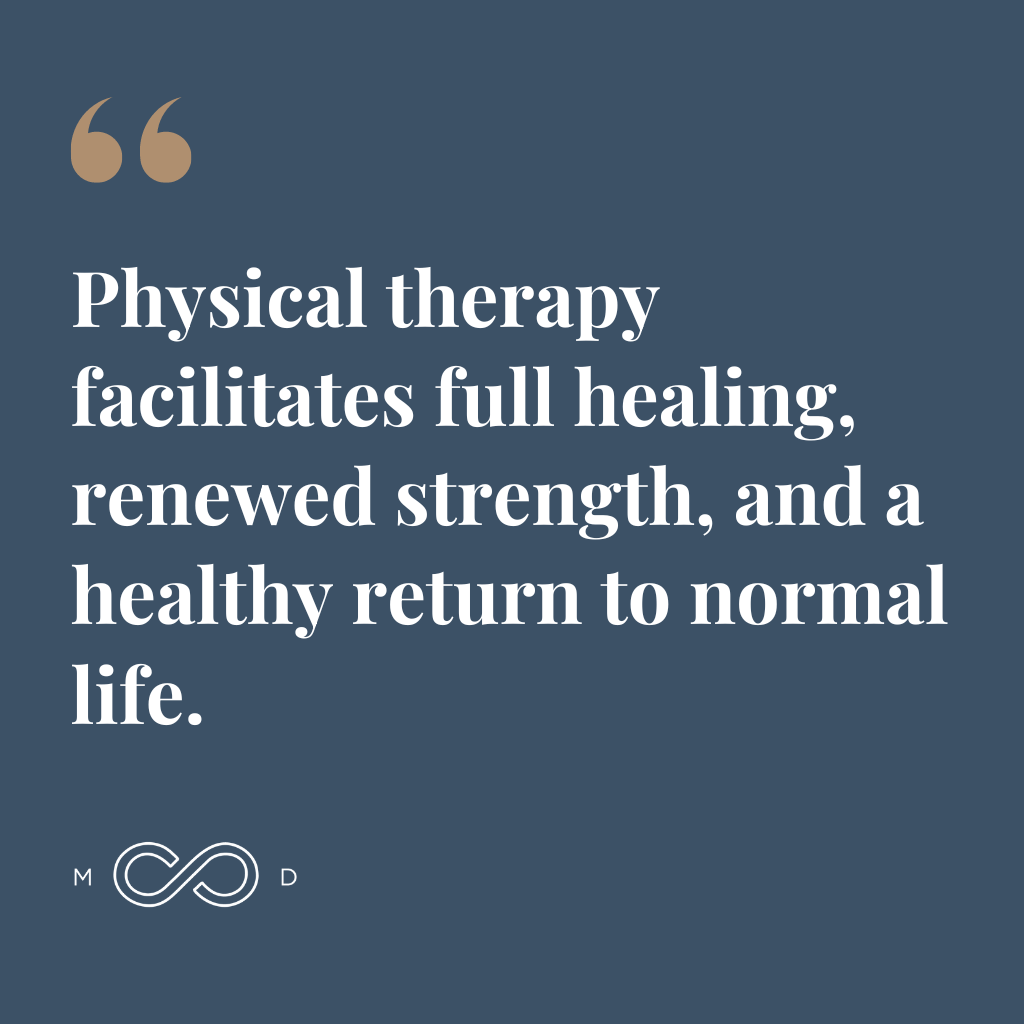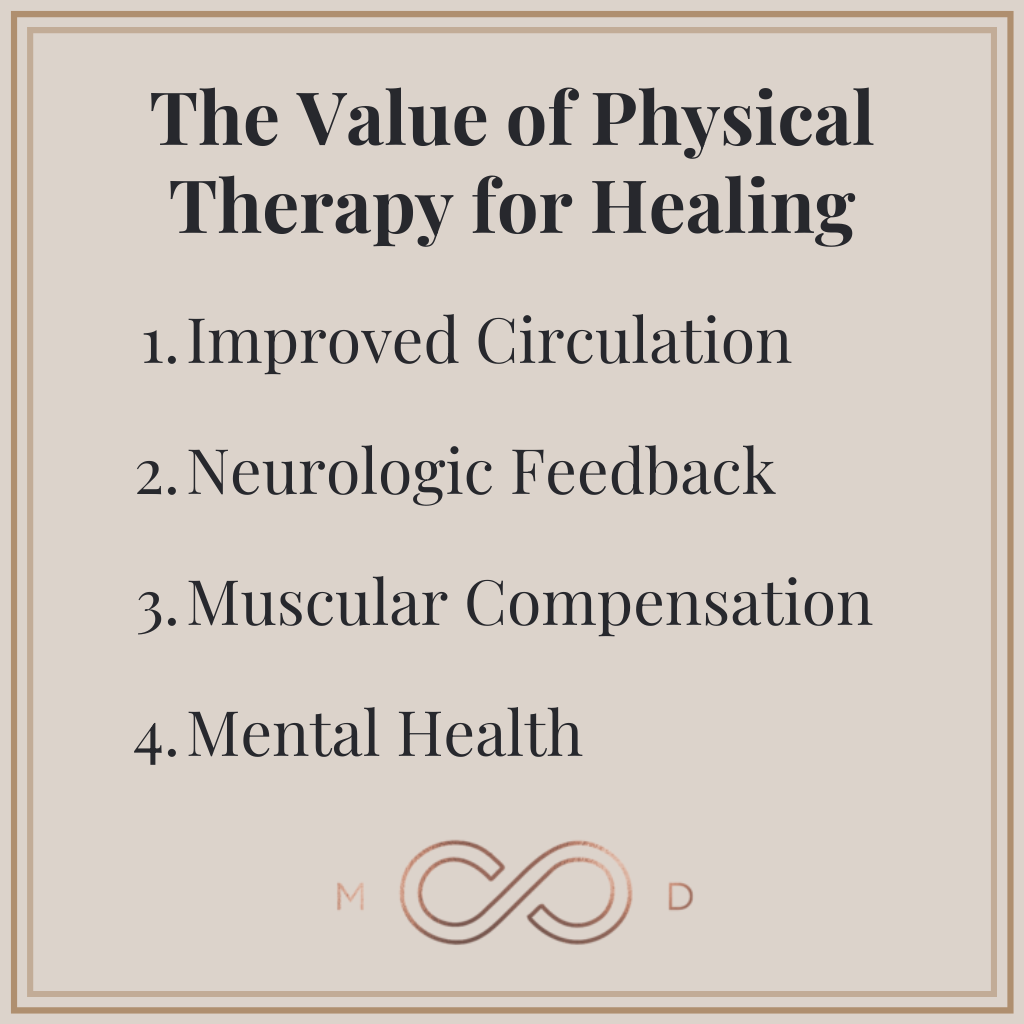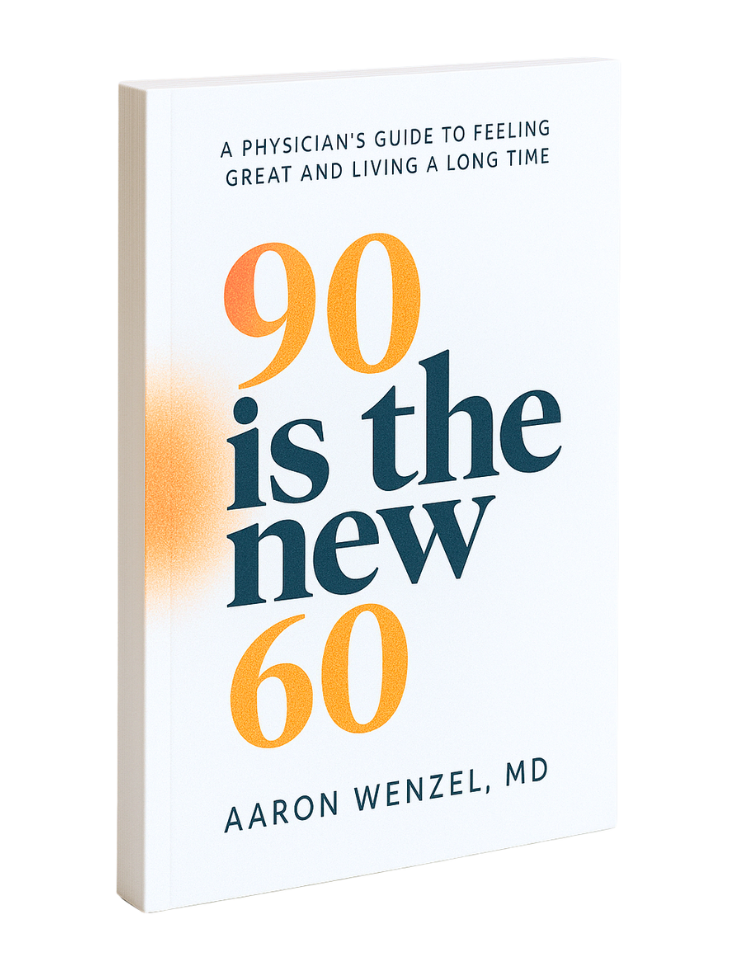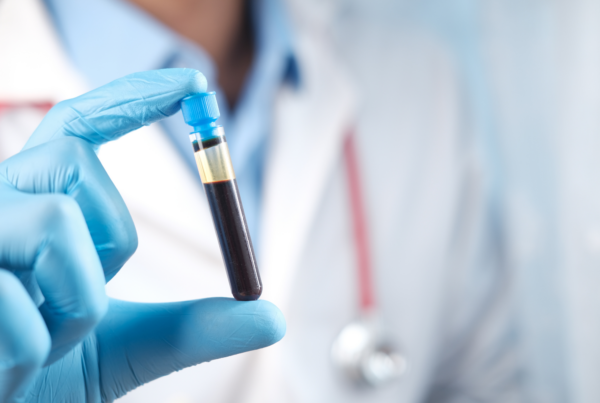As those who know the value of regular exercise, primary care physicians encourage our patients to cultivate an active lifestyle.
Appropriate, healthy levels of exercise contribute positively to health and longevity, staving off many of the top killers that take humans off this planet. That said, we also recognize that an active lifestyle comes with a risk of injury, whether from trauma or repeated strain.
Following injury, guided physical therapy (PT) properly stimulates the affected area to facilitate true healing. However, it also requires time, effort, attention, and energy. Consequently, physical therapy doesn’t always spring to mind as a feasible option for busy individuals with packed schedules.
Let’s discuss some common misconceptions about physical therapy and how to decide when an injury would benefit from PT.
3 Common PT Misconceptions
1. It Just Needs a Little Rest
While rest is a component of healing, it’s only one component in the process. Recovery is a more active process than we often think, requiring not only rest but also guided physical movement to achieve complete healing.
2. I Can Recycle Old PT for New Injuries
Sometimes patients tell me that they’ve had a certain injury before, so they’ll just use the PT techniques they learned without actually going to physical therapy.
I understand the impulse, but the trouble with this approach is the uniqueness inherent in each injury. Maybe you’ve tweaked your knee or sprained your ankle before, and the injury seems the same — on the surface. Beneath the surface, however, each instance differs from the last, often in subtle ways.
The exercises and techniques employed to treat your knee or ankle in the past may no longer be the most appropriate tools in your current situation. Too, your body is different today than it was when you were younger, so the same treatments may be less effective for your current recovery and rehabilitation.
3. Small Injuries Don’t Need PT
We’re not shocked when something like a torn rotator cuff or a knee replacement requires physical therapy, but what about minor injuries?
DOWNLOAD OUR FREE EBOOK
Concierge Medicine is the future of healthcare.
Learn more about this refreshing alternative to traditional primary care, and decide if it's right for you.
Key Considerations to decide...
Is Concierge Medicine Right for You?
Amid busy schedules and the demands of daily life, it can be difficult to acknowledge the need for more than temporary rest — especially for problems that seem small. However, certain minor injuries benefit significantly from proper physical therapy.
The Value of Physical Therapy for Healing
Why is physical therapy so important? While rest gives injuries the chance to heal without further damage, true recovery often involves introducing carefully measured activity. Physical therapy’s exercises and interventions provide numerous benefits to facilitate healing, especially the following:
1. Improved Circulation
Blood circulation, and especially microcirculation, is the transportation of your body’s healing mechanisms. So when you strain a hamstring, for example, improving circulation to the muscle enables healing agents to reach and repair the tissue.
2. Neurologic Feedback
The nervous system plays a key role in the sensation of pain but is also vital in recovery. Effective physical therapy ensures proper neurologic feedback, strengthening tissues around the injury site and preventing the development of chronic pain.
Even small injuries can result in chronic discomfort. Physical therapists use techniques like manual therapy, therapeutic exercises, and modalities like ice, heat, and laser therapy to promote healing.
These methods help manage pain and reduce the need for long-term medication with NSAIDs or opioids, drugs that come with a laundry list of risks.
3. Muscular Compensation
With almost any kind of injury, your body’s natural response is to compensate for the loss by recruiting surrounding muscle groups. This keeps you functioning in the short term, but it can lead to overuse of those supportive structures without guidance for your system as a whole.
For instance, say you roll your left ankle while jogging. You ice it, elevate it, and try to rest it as much as possible — but you have work to do, kids to pick up, errands to run. After a day or two, you have to get back to your life.
Fast forward five to seven days, and your right knee starts bothering you. Without even realizing it, you’ve been shifting weight to your other leg — and the overuse has caused new pain and inflammation to appear.
Physical therapy helps guide patients through the recovery process not only for the injury itself but also for any compensating areas, helping avoid a cascade of additional strain and damage.
4. Mental Health
Simply knowing you’re actively involved in your healing and recovery process provides positive mental health momentum, which dovetails into the best possible response for full and complete physical recovery.
In contrast to the strictly passive process of pure rest — which many people find rankling anyway — the mental power of active engagement with recovery compounds all your efforts.
When a Physician May Recommend Physical Therapy
Choosing the appropriate treatment plan for any injury starts with considering two main factors.
First, the mechanism of injury — how the injury occurred — gives us insight into which structures are likely affected. Common mechanisms include overuse, improper technique (such as lifting with your back), car accidents, traumatic falls, and more.
Alongside the mechanism of injury, symptoms like swelling, pain severity, ability to bear weight, etc. also guide the decision-making process.
Together, the mechanism of injury and symptoms help us decide the best next steps to take. Does it need immediate imaging to check for fracture or dislocation? A referral to a specialist? Or are rest and active recovery more appropriate?
What to Do for Minor Injuries
After reading this, maybe you’re thoroughly convinced of PT’s value (or maybe you already were). Still, when you experience a minor injury at home, how do you know whether it merits a trip to the doctor?
While I don’t have precise parameters I can give to help you evaluate every injury, I do have a few tips:
- Trust your instincts. How severe does your gut tell you this injury is? If it’s beyond something very simple, like a mild strain, go ahead and reach out to your primary care physician for guidance.
- Provide rest and support. If the injury is mild, take steps to support the area with appropriate therapies (cold to reduce pain, heat to then promote circulation, elevation, compression, etc.) and rest it. If you need help deciding which therapies to apply, reach out to your doctor.
- Give it (a little) time. Monitor the injured area’s progress for 24 to 36 hours.
- Evaluate progress. If you notice positive progress by the end of the designated period, then you may not need further assessment. But if nothing improves or if the condition worsens, contact your primary care doctor.
Why such a short monitoring period? Because early intervention with physical therapy is incredibly valuable. It not only decreases initial recovery time but also helps to prevent reinjury in the future.
Physical therapy might be inconvenient at the time, but it often means the most secure return to your regular activities. From the high school football player who wants to excel in his remaining seasons to the pharmaceutical rep who has to drive and stand all day, early intervention with physical therapy facilitates full healing, renewed strength, and a healthy return to normal life.


Dr. Wright joined Brentwood MD in 2022 as the model allows him to spend more time connecting with patients and build a foundation of exceptional care. He is a Nashville native and completed his family medicine residency at the University of Tennessee Health Science Center, where he also served as Chief Resident. He believes that your health deserves a prominent position on your priority list, and would be honored to serve you and your family.









